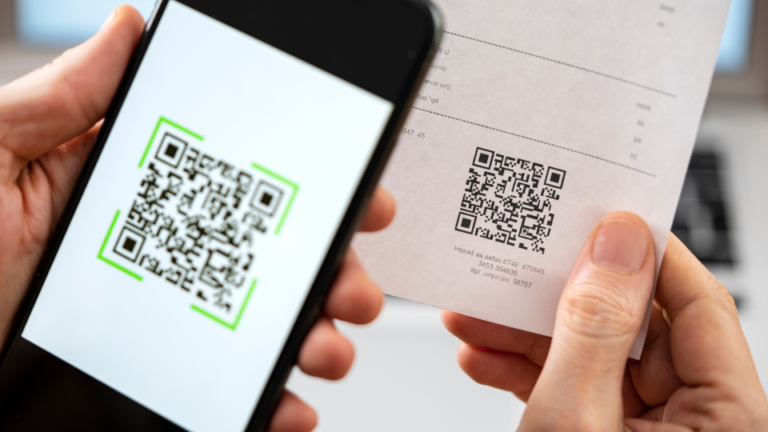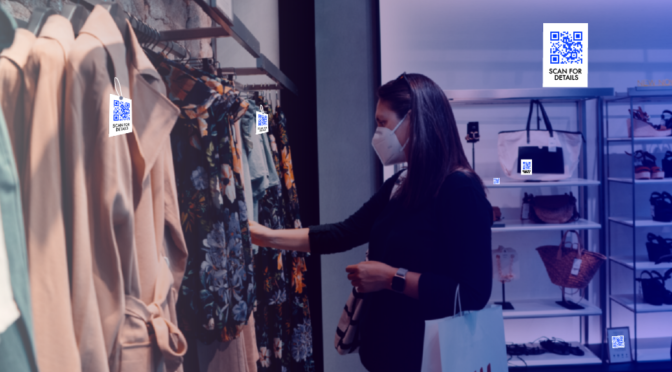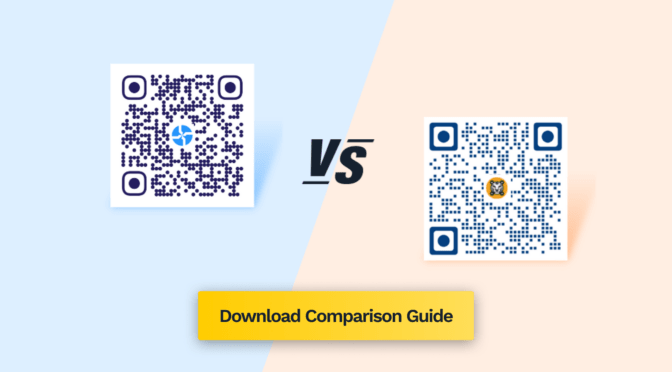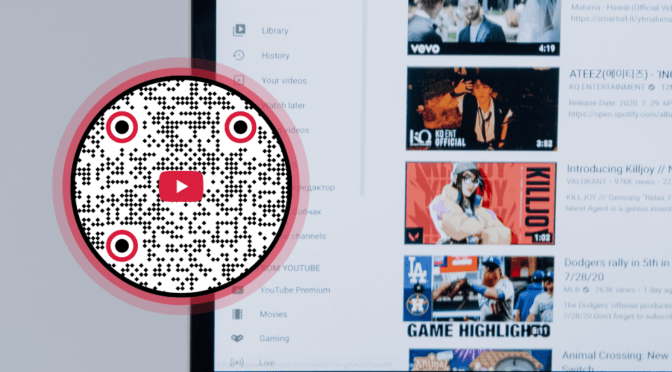A greater part of the population has come across a QR Code in their surroundings.
QR Codes dipped in popularity for some time. But in recent years, they have made a comeback. But some marketers still run into problems with them.
So if you’ve seen the potential of QR Codes in digital marketing but can’t seem to get your customers to use them, this is for you. We’ll look at five reasons customers might not be using your QR Codes – and what you can do about it.

Do People Still Use QR Codes?
To put it bluntly, QR Codes are killing it now. Last year, 11 million households in the US would use a QR code in 2020. The forecast was an increase from 10.44 million in 2019:
As we can see, QR code usage is steadily rising. A spike in 2020 might also be attributed to the increasing digitization of life due to the COVID-19 pandemic. A September 2020 survey by Statista found that almost 32 percent of respondents had scanned a QR Code. For instance, restaurants use them to check customers in and gather contact details for “Test and Trace” schemes.
This is just one reason 2021 is the year of QR Codes. It would be a shame for marketers and business owners to miss this opportunity.
5 Reasons Why Aren’t People Using your QR Codes (And How to Fix It)
If people are into QR Codes now (and they are!), why aren’t they using yours? In this section, we’ll look at five of the most common reasons. We’ll also give you tips on how to overcome these issues and boost engagement with your Codes.
Let’s dive in!
1. They Don’t Know How
68% of QR code users are aged between 24 and 54, and people aged 55 and above only made up 18% of overall QR code users.
You could take the time to create instructional videos for those who aren’t familiar with the technology, but that would take time. If you’re running a marketing campaign with a time limit, that’s not feasible. It might also not be incredibly efficient.
Besides, when people don’t know how to use something, they usually just skip using it altogether. No one wants to “waste their time” learning about something new unless they can see the perceived benefit to them.
The solution to this problem is to place simple instructions next to the code on how to scan, and use it. I like this version from Golden Harbor, a Chinese restaurant that uses QR Codes to enable contactless ordering:

2. Your QR Code is Poorly Placed
QR Codes are a great lead generation technique. But you’ll only get those leads if you make it easy and convenient for customers to engage with you. That means you need to make sure the QR Codes are placed in prominent and intuitive locations.
Here’s just one example from food company Heinz:

Once the QR Code was scanned, customers could play a trivia game for a chance to win a prize or submit their designs for a Heinz bottle label competition.
The back of a Heinz ketchup bottle, for example, is a good location. Amazon’s Holiday of Play also utilized QR Codes in its print catalog to great effect:

This QR code on the back of a truck? Not so much.

According to marketing specialist Heidi Cohen, there are 12 “prime locations” for your QR Codes:
- Print media, such as magazine or newspaper ads.
- Out-of-home advertising posts. Places like bus stops, where people are likely to be waiting and killing time, are excellent. Avoid big billboards in busy areas and on major roads, though.
- Buildings, such as facades or windows.
- In-store signage.
- Product packaging.
- Flyers and handouts.
- Direct mail and catalogs.
- Business cards.
- Shopping bags.
- Powerpoint presentations.
- Clothing and accessories, such as giveaway custom t-shirts.
- Temporary tattoos.
In addition to these locations, QR Codes on receipts can be an effective way to increase post-purchase revenue and customer engagement.
So, what’s the bottom line with QR Code placement? Your QR Code should be prominent and easily accessible. It should not be located in an area where it would be highly inconvenient (or even dangerous) for people to pause and scan the code.
Consider internet access and WiFi, too. Your customers can’t scan your Codes if they can’t get online.
One last pro-tip that a surprising number of marketers forget: make sure your QR Codes work! Test them before you launch your campaign.
3. The Benefit is Not Sufficiently Clear
The Heinz QR code campaign worked for one reason: it made the benefit to the audience clear. People had a chance to win one of 57 eco-friendly prizes if they played the trivial pursuit game.
These are two value propositions in one: the opportunity to win and the fun of playing.
QR Codes, as with any other marketing campaign, must pass the WIIFM (What’s In It For Me) test. In other words, people won’t use them if they don’t see the benefit to them.
Here are a few benefits and value propositions you might consider offering:
- Exclusive videos, pictures, and other content
- Free downloadable resources
- “Instant win” contests
- Special offers, coupons, or gifts
Make sure you communicate this benefit well. You’re asking the customer to pause and take a moment out of their day to scan your code, so make sure they know what they’ll get out of doing so.
4. The Messaging is Not Appropriately Targeted to your Audience
It’s not enough you have an excellent idea for a QR marketing campaign. You need to create the proper messaging for your target audience as well. This requires an understanding of your target audience. The best way to do this is to return to your customer persona (or create one if you don’t have one already).
If your messaging is not appropriately targeted to your audience, go back to the drawing board. What type of language do they use? What marketing channels do they use, and what social media platforms are they on? How old are they, and where do they live? What are their interests?
Perhaps most importantly, determine their pain-points. What problem are they facing that your campaign can help them solve?
From there, you can craft a message that gets your point across and resonates with your target audience.
You also need to know what you want to achieve with your QR Code marketing campaign. If your goals are ill-defined, you won’t reach them. Would you like to increase your number of Facebook likes on your page? Or expand your email list? Make sure you know your end goal before you start.
5. Your QR Code Leads to a Poorly Designed or User-Unfriendly Page
QR Codes are supposed to enhance the customer experience. They can’t do that if the website they are linked to is poorly designed or is not user-friendly.
Your website and landing page must be well-designed, uncluttered, and easy to navigate. Anything that is too busy or has too many elements will confuse the visitor and cause them to leave the site.
Perhaps the most crucial aspect to focus on is the call to action (CTA). This is where you tell the site visitor what you want them to do now they’ve landed on your website. Give their contact information? Fill in a survey or marketing quiz? Enter a contest? Make a purchase?
Whatever it is, your CTA must be centrally located, prominent, and easy to read and understand. QR stands for Quick Response. You can’t expect to get that quick response from people who can’t find their way around your site or don’t understand your CTA.
You also need to ensure that your website or landing page is optimized for mobile. QR Codes can only be scanned with a device like a smartphone or a tablet with a camera or scanner app.
If your audience is directed to a website with content that is hard to read or navigate from a small screen, you can expect they’ll leave your site without taking action. Furthermore, they won’t ever use your QR code again.
Your website should look something like this:

This Nissan page is an ideal example of a website linked to a QR code. The page is mobile-friendly, easy to navigate, and looks crisp and clean. Everything the website visitor may want to see is there, and the page is designed with user-friendliness in mind.
If the website linked to your QR code isn’t strong enough, you won’t achieve your goals. You can use a landing page builder or hire a web designer to help you. You can also get more insights about QR Code landing pages with Uniqode.
Wrapping Up,
QR Codes have made a comeback and are going to stick around. Businesses and marketers should take advantage of this growth to get ahead of their competitors. With QR Codes, you can do so many things that will help you achieve your business goals. You can increase brand awareness, improve social engagement, generate leads, increase sales, amongst other factors.
If people aren’t using your QR Codes, does one of the main problems we’ve identified apply? In summary, ask yourself these questions if your campaign doesn’t have the desired effect:
- Have you provided easy instructions on how to use the Codes?
- Is your code well placed and accessible?
- Have you made the benefit to the user clear?
- Is the messaging appropriately targeted to the right audience?
- Does the code lead to a well-designed, mobile-optimized landing page?
If the answer to any of these is “no,” you might have found your problem. Several brands are killing it in QR Code marketing when they learn how to do it properly. You can, too. Just follow these tips and avoid any of these common issues, and you’ll surely reach your QR Code marketing campaign goals.
Ektha is a QR code expert with years of research and analysis into the evolution of QR codes. Having written over 70 in-depth articles on QR technology, she has developed a comprehensive understanding of how QR codes are transforming industries. Her insights, including The State of QR Report, have been featured in leading publications. With a passion for simplifying complex topics and providing actionable strategies, Ektha helps businesses leverage QR codes to enhance their ‘phygital’ connections.












